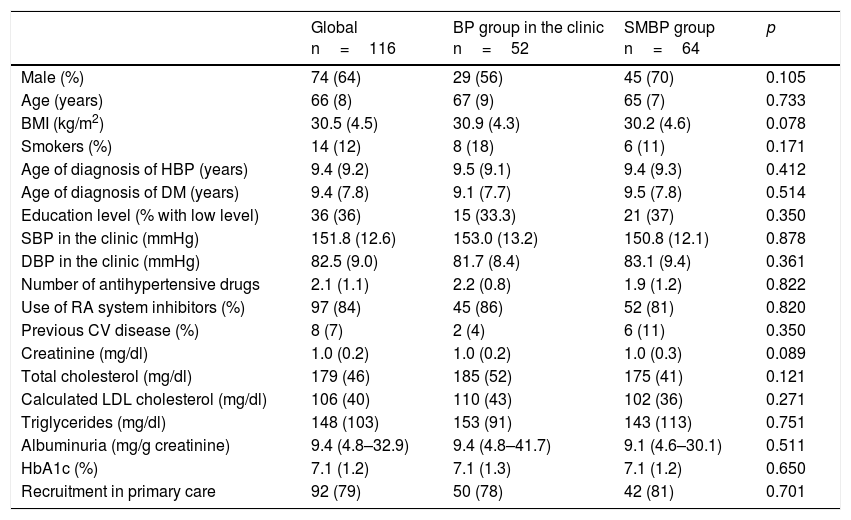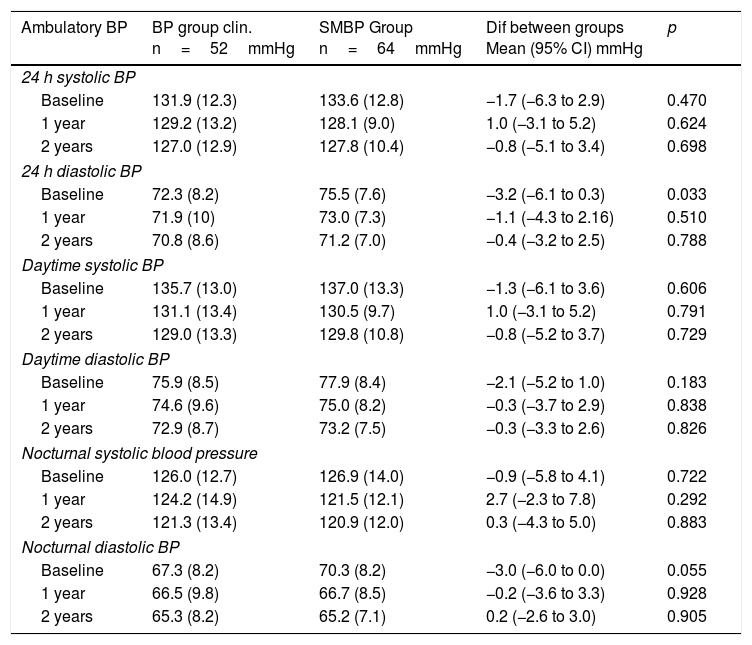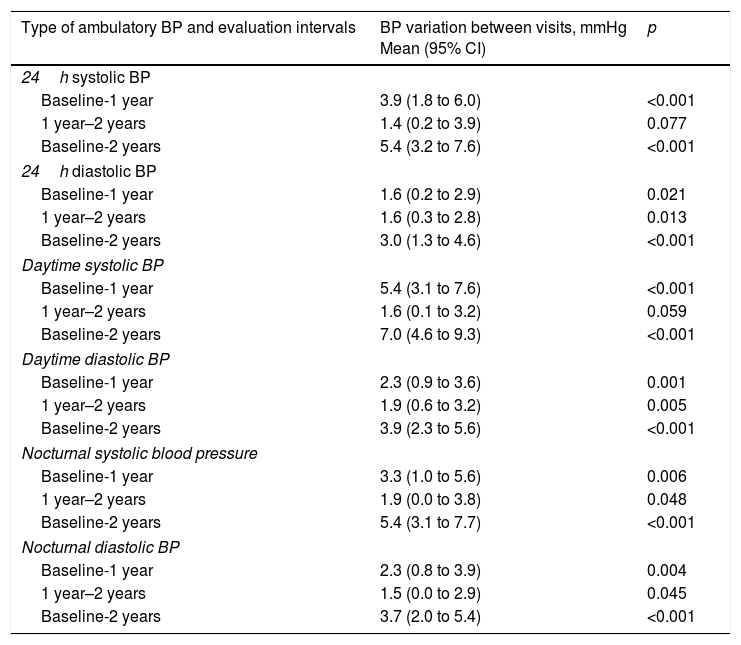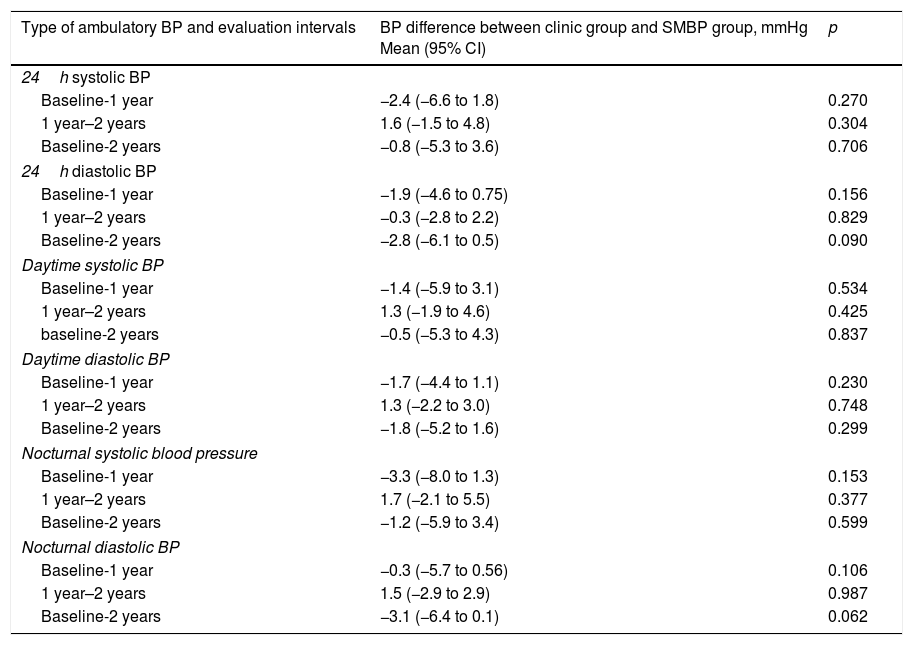To compare the efficacy of two strategies of blood pressure (BP) measurement-based follow-up in hypertension and albuminuria control.
Patients and methodsMulticentre, prospective, randomized, open trial with a parallel-group design. Nineteen primary care centres and a hospital clinic participated. Adult type 2 diabetics with systolic BP ≥140mmHg without relevant renal disease were randomized to one of two follow-up strategies: (1) standard follow up, with a clinic BP target <140/90mmHg and (2) self-monitoring home BP (SMHBP)-based follow up, with a BP target <135/85mmHg. Biochemical standard blood variables, albuminuria, and 24-h ambulatory BP monitoring were performed at entry, 12 and 24 months. The main outcome measurement was 24-h ambulatory systolic BP variation. Albuminuria change was analyzed as a secondary outcome.
Results116 patients were analyzed (mean age: 66.8 years). Mean systolic ambulatory 24-h BP change in two years was 3.9mmHg (95% CI 1.8–6.1). We did not find significant differences between both groups (p=0.706). Similarly, no differences were found when we compared other ambulatory BP values. Initial albuminuria was similar in both groups and did not significantly changed throughout the follow-up period.
ConclusionIn type 2 diabetics without relevant nephropathy a SMHBP- based follow up was equivalent to a standard clinic-based BP follow up in BP and albuminuria control.
Comparar la eficacia en el control de la hipertensión arterial (HTA) y la albuminuria de 2 estrategias de seguimiento basadas en diferentes métodos de evaluación de la presión arterial (PA).
Pacientes y métodosEstudio de intervención aleatorizado, abierto, con grupo control, de 2 años de duración, realizado en 19 centros de atención primaria y una consulta de medicina interna.
Se incluyó a diabéticos adultos tipo 2 con PA sistólica (PAS) ≥ 140mmHg sin nefropatía relevante. Los pacientes fueron aleatorizados a: 1) grupo de seguimiento convencional, con un objetivo de PA en la consulta < 140/90mmHg; y 2) grupo de seguimiento basado en cifras de automedición domiciliaria de la PA (AMPA), con un objetivo de PA en el domicilio < 135/85mmHg. En las visitas basal, anual y final se realizaron un perfil bioquímico, medición de albuminuria y monitorización ambulatoria de la PA de 24h. La principal variable de eficacia fue la variación de la PAS ambulatoria de 24h. Como variable secundaria se analizó la albuminuria.
ResultadosFueron evaluados 116 pacientes (edad media: 66,8 años). El descenso medio de la PAS ambulatoria de 24h en 2 años fue de 3,9mmHg (IC del 95%: 1,8–6,1), sin observarse diferencias significativas entre los 2 grupos (p=0,706), así como tampoco entre el resto de valores de PA ambulatoria. La albuminuria inicial fue similar en ambos grupos y no se modificó significativamente durante el seguimiento.
ConclusiónEn pacientes diabéticos sin nefropatía relevante, un seguimiento basado en AMPA mostró una eficacia similar en el control de la HTA y la albuminuria que el seguimiento convencional.













